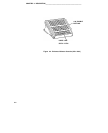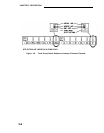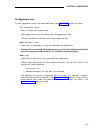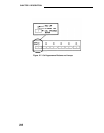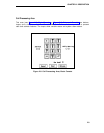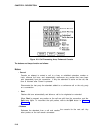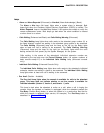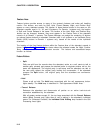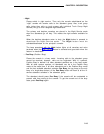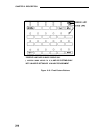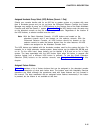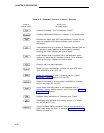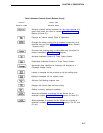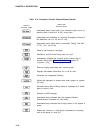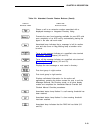
CHAPTER 2. DESCRIPTION
Feature Area
Feature buttons provide access to many of the system’s features and make call handling
easier.
Five buttons, one each for Split, Hold, Forced Release, Night, and Position Busy
appear on every attendant console. The location of these feature buttons is the same on the
attendant consoles used in V1, V2, and V3 systems. For Generic 1 systems only, the location
of Split and Forced Release is the same. The location of the Hold, Night, and Position Busy
buttons can be changed; however, they must appear in the Feature Area of the attendant
console of ail Generic 1 systems. The System Manager can assign the remaining 19 buttons
as optional feature buttons on attendant consoles used in all systems or as Hundreds Group
Select (HGS) buttons in Generic 1 systems only, based on the needs of the individual
attendant.
.
The location of the fixed feature buttons within the Feature Area of the attendant console is
shown in Figure 2-10. Figure 2-10 also shows where the software locates the Night, Position
Busy, and Hold buttons on the attendant console. The buttons and associated lamps
function as follows:
Feature Buttons
• Split
Calls are split from the console when the attendant, active on a call, wants to talk to
another party privately and presses the desired button to originate another call on the
same call appearance. The original party is split away and the attendant can talk to
the new party without the original party hearing the conversation. If the attendant
presses the Split button, the original party and the attendant are conference
together.
• Hold
Places a call on hold. The Hold lamp associated with the call appearance button
lights steadily. The Hold lamp is described in “Call Appearance Button Area. ”
• Forced Release
Releases the attendant and disconnects all parties on an active trunk-to-trunk
connection established by the attendant.
With all system versions except V1, the top lamp associated with the Forced Release
button (Basic Console only) lights when a call is waiting in the attendant’s individual
queue. For Enhanced Consoles, the Individual Calls Waiting lamp located in the Call
Processing Area lights.
.
2-12



